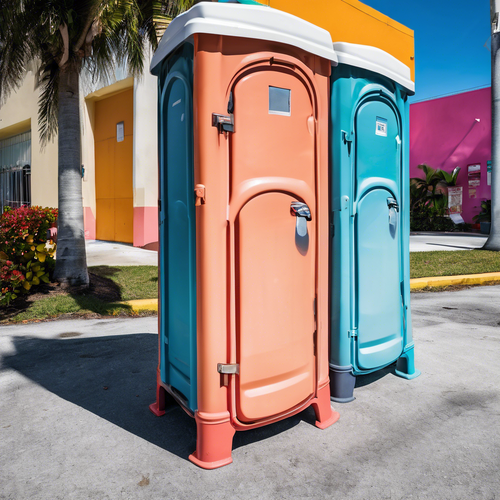Where Does the Waste Go? The Journey of Portable Toilet Contents in Miami
In a bustling metropolis like Miami, where outdoor events thrive, the presence of portable toilets is prevalent. These temporary sanitation solutions play a crucial role during festivals, construction projects, and public gatherings. However, behind the convenience lies a complex and often overlooked journey for the waste they collect. What happens to the contents of these portable toilets after they are emptied? 🚽💩
The Collection Process: A Duty of Precision
When portable toilets are no longer in use, the first step is the collection of waste, handled by specialized sanitation companies. In Miami, companies like Broward Waste Management operate around the clock, ensuring that full units are promptly emptied to prevent overflow and environmental contamination.
Each unit is designed to hold approximately 60 gallons of waste, which adds up quickly during large events. Upon collection, portable toilet trucks equipped with vacuum pumps are dispatched to remove the contents. This process is swift; however, it necessitates a careful approach to avoid spillage and unpleasant odors. The trucks are built with waste containment systems to ensure that nothing goes awry during transit.
The Journey to Treatment Facilities
Once collected, the waste is transported to one of Miami’s wastewater treatment facilities. The city operates several plants, including the North Miami Wastewater Treatment Plant, which utilizes advanced processes to handle the influx of refuse, ensuring public health safety and environmental preservation.
Upon arrival, the waste undergoes an initial screening to remove non-biodegradable materials. This step is crucial, as foreign objects can disrupt the treatment process and increase operational costs. Subsequently, the waste enters the primary treatment phase, where it is subjected to settling tanks that allow solids to separate from liquids. Did you know that this initial process removes about 50-60% of the organic matter? 🌿
Advanced Treatment: From Waste to Resource
After primary treatment, the remaining wastewater is subjected to secondary treatment, a process involving aeration tanks that promote the growth of bacteria. These microorganisms consume organic matter, significantly reducing contaminants. Interestingly, secondary treatment can achieve up to 90% removal of biochemical oxygen demand (BOD), a key measure of water pollution.
Post-treatment, the processed water is typically subjected to tertiary treatment processes to remove remaining impurities, and in some cases, it is disinfected for potential reuse. This is a significant step towards sustainability and aligns Miami’s waste management practices with modern environmental standards.
Disposal and Reuse: Closing the Loop
The remaining sludge, after undergoing rigorous testing and dewatering, is often repurposed. In some cases, it can be transformed into biosolids, which can be utilized as fertilizer for landscaping. This closing of the loop not only reduces landfill waste but also provides a sustainable resource for agriculture and land reclamation. 🌎💚
The Environmental Impact: Understanding the Importance
Proper management of portable toilet waste is more than just a logistical necessity; it is essential for protecting the environment and public health. According to the United States Environmental Protection Agency (EPA), poorly managed waste can lead to contamination of water bodies, which can have dire repercussions for ecosystems and community health. Miami’s strategic approach to sanitation minimizes these risks and showcases a commitment to environmental stewardship.
“Effective waste management requires not just compliance with regulations but a proactive stance on public health and environmental conservation,” states Dr. Jennifer White, an environmental engineer specializing in water quality.
The Future of Waste Management in Miami
As Miami continues to grow, the methods of waste collection and treatment are evolving. Innovations in technology, such as mobile apps that track waste levels in portable toilets in real-time, are being implemented to streamline operations and minimize overflows. Furthermore, advancements in treatment processes promise even greater efficiency and lower environmental impact.
Conclusion: The Sanitary Symphony of Miami
While portable toilets may seem like simple conveniences, their waste’s journey unveils a complex network of processes designed to protect health and the environment. The collaboration of municipal services and waste management companies ensures that Miami’s sanitation remains reliable, efficient, and sustainable. So, the next time you see a portable toilet, remember the vital role it plays and the intricate journey of the waste that it handles. 🚻✨

